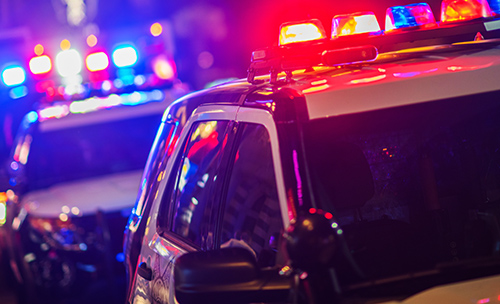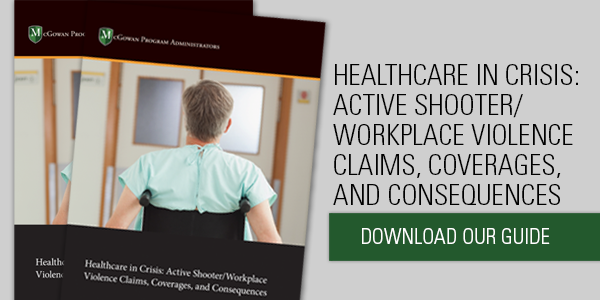The response to active shooter situations has evolved over the past several decades, but the risk to life continues to loom. Progress has been made by overhauling law enforcement and emergency personnel procedures, but active shooter risk remains. In creating active shooter protocols, it is helpful to have an overview of how active shooter response policies have evolved over the decades. Well-informed emergency management personnel can then create company active shooter plans with the most recent law enforcement practices in mind.
While many would mark Columbine as the start of the rise of active shooter incidents, the problem has a much longer history. In 1966, The University of Texas at Austin campus was held siege by an active shooter who climbed the campus clock tower and fired at the university crowd. Both citizens and emergency personnel responded to the shooter, but the incident went on for 96 minutes. The shooter killed 14 people and wounded dozens more.
The event gave rise to an active shooter response plan that involved local police departments responding and securing the scene. The first responders would then wait for the better trained and heavily equipped SWAT team to arrive and apprehend the shooter. This response protocol developed over decades and was widely adopted across the nation.
The shortcoming of the plan became painfully clear after the Columbine massacre. In 1999, two students entered their Colorado high school and killed 12 classmates, a teacher, and wounded more than 20 others. Per the response protocols in use at the time, deputies arrived, surrounded the school, and waited for the SWAT team. Emergency officials didn’t enter the school until 47 minutes after the shooting began.
Modern response protocols
The Columbine tragedy spawned a new way of thinking about active shooter response. New protocols emerged, and officers were trained to respond and make entry immediately. The early changes called for officers to stand by until a group of three or four could enter the building, but officers are now taught to enter immediately to stop the threat.
Further, current protocols call for every police officer to train in SWAT procedures. With the realization that every minute counts in an active shooter scenario, officers now enter the building immediately. In other words, the first responding officer is the SWAT team.
A recent example of the new active shooter protocols in action can be found in last year’s Middleton, WI active shooter situation. Within four minutes of the 911 call, officers were in the building. The shooter injured four of his coworkers before focusing his attention on the police. The officers shot and killed the gunman. By all accounts, the new protocols saved many lives.
We feel education is critical so we would like to share recent
information about our McGowan Active Shooter/Workplace Violence Insurance Programs.
Medical response to active shooter situations
Emergency medical response to active shooters has also evolved. Similar to law enforcement, medical intervention now focuses on making entry as soon as possible. In the past, emergency medical services (EMS) personnel were stationed outside the area and waited for an all-clear signal from police officers. However, modern-day active shooter protocols recognize the importance of getting medical staff to the shooting victims as soon as possible. EMS workers wear bulletproof vests and helmets and enter active shooter situations directly behind officers.
Again, Middleton is illustrative. Paramedics entered the building and tried to save the shooter’s life after being shot by the police.
The stakes are incredibly high in the minutes following an active shooter/workplace violence situation. The Pulse Nightclub shooting in Orlando demonstrates the need for emergency medical units to access the scene immediately. Last year, a study in the professional journal Prehospital Emergency Care, noted 16 of the 49 Pulse Nightclub casualties might have been saved if they received emergency medical care within 10 minutes and arrived at a trauma center with one hour.
Public education
As active shooter/workplace violence response plans evolve, some communities are expanding their focus to include community training. Recognizing the need to inform citizens about the best way to respond in an active shooting situation, municipalities have launched awareness campaigns. While teaching citizens to “Run, Hide, Fight,” isn’t part of a law enforcement mandate, officers recognize the need to educate the citizenry about life-saving responses in an active shooter situation.
Active shooter responses continue to evolve
Despite the culture shift and ongoing training surrounding active shooter response, the risk remains ever present. Businesses must have extensive and detailed response plans in place. Such policies must address what happens before, during and after an active shooter emergency.
McGowan Program Administrators has studied the fallout of active shooter/workplace violence situations to find the most effective insurance response to such an emergency. McGowan’s Active Shooter/Workplace Violence policies provide comprehensive coverage including day one coverages for victims, primary liability, business interruption, extra expense, and crisis management services with capacity to $100 million.
Active shooter / Workplace Violence preparation must be part of every business’s continuity plan. Team up with the experts at McGowan for the most comprehensive active shooter insurance available.




